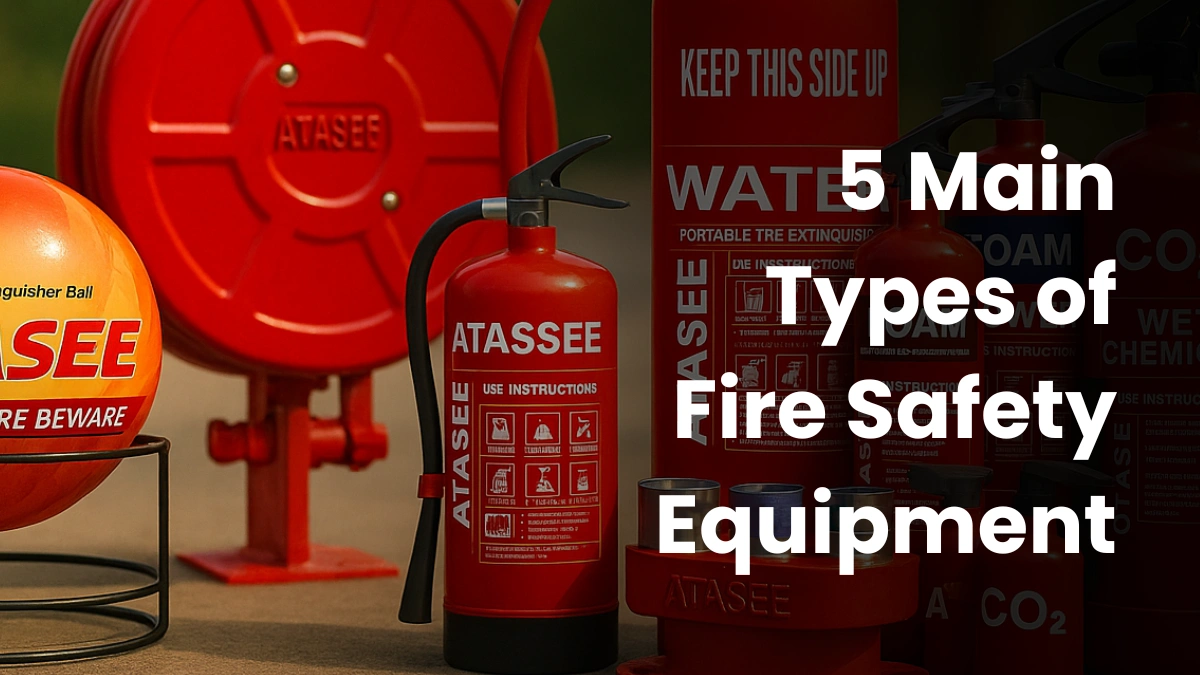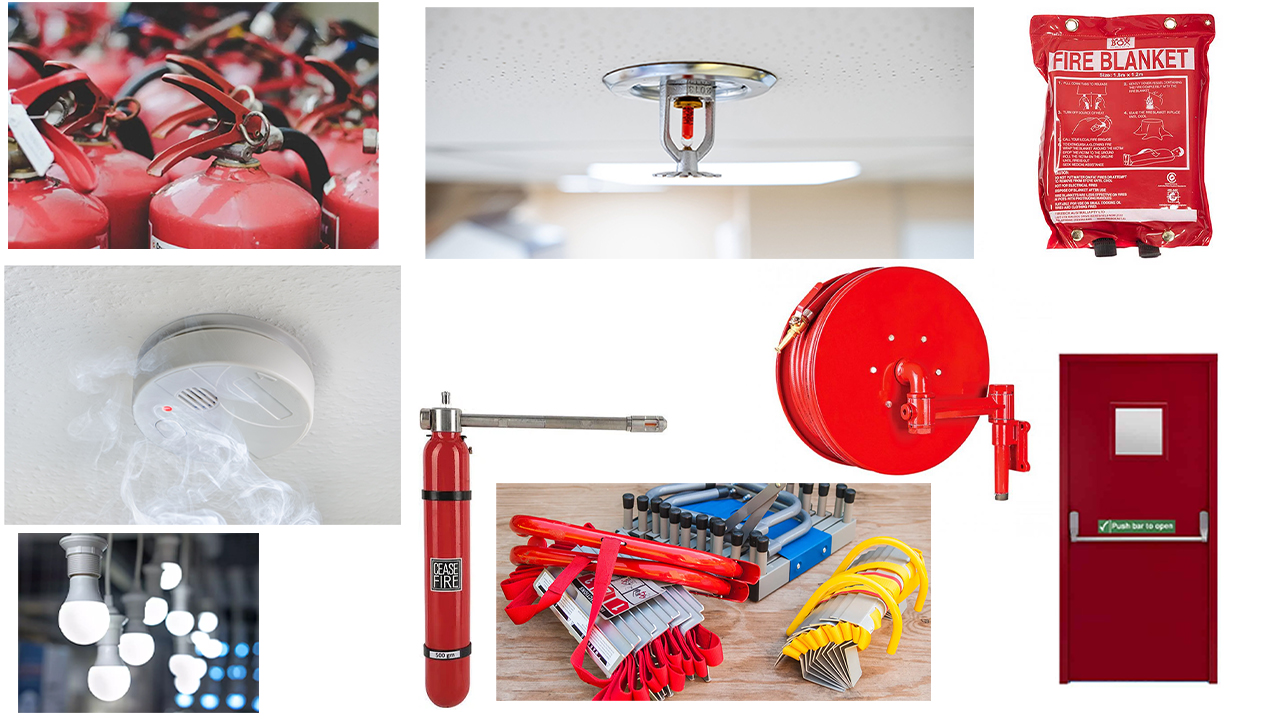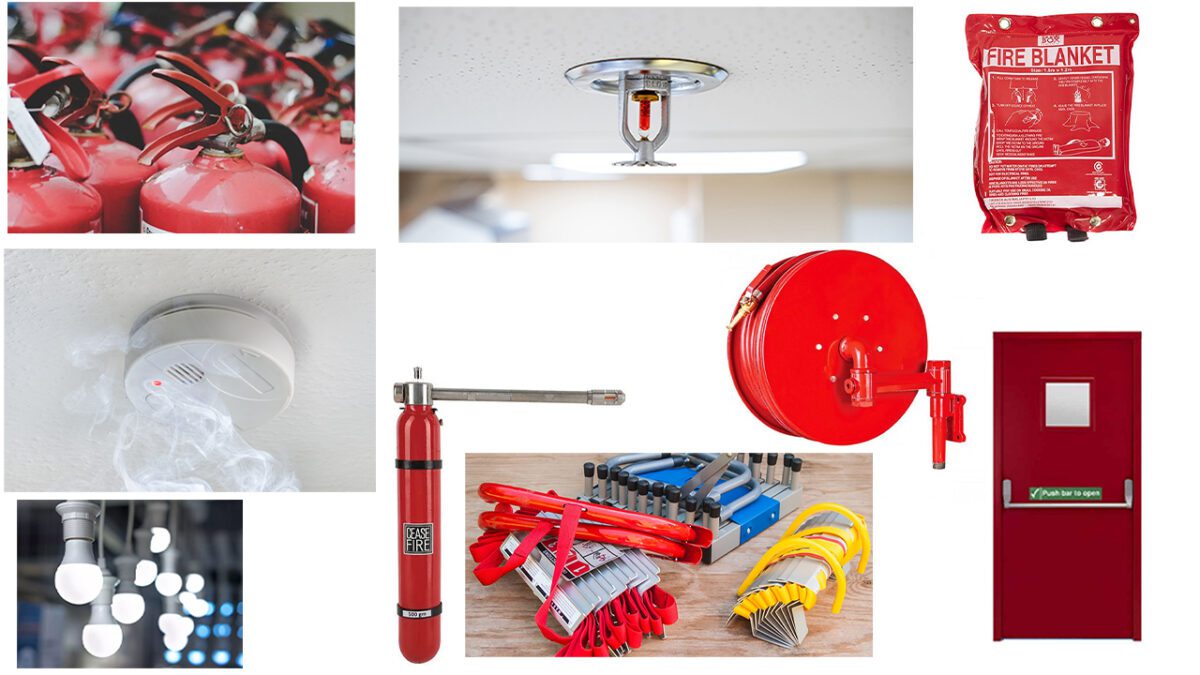
Fire safety equipment refers to various types of devices and gear that are designed to prevent, detect, control, and mitigate the impact of fires. They play a very important role in protecting lives and property. Whether it’s a residential building, business workplace, or public space.
Let’s have a look at the five main types of safety equipment and talk about how important they are. In this article, we explain the 5 main types of fire safety equipment that provide fire safety. So, let’s start.
Fires can occur at any time because it is unpredictable and can become a threat to you, your residence, your buisness, and your property. So here, we will discuss the main types of fire safety equipment that are safeguards for your belongings and property.
1. Fire Extinguishers
Fire extinguishers are the most recognisable and widely used fire safety equipment. It has four different types, and each is designed to handle specific types of fire. let’s discuss about them;
Water Extinguishers: These types of fire extinguishers are used for fires involving ordinary combustible materials like wood, paper, and cloth. But these are not the best for fuel, gas fires, or electrical fires.
Foam Spray Extinguishers: The foam spray acts as a barrier between the flame and the fuel on burning liquid. These foam spray type extinguishers are designed for liquids like petrol, oil, grease, and some kinds of paint. You can’t use it for like gas fires or deep fat fryers.
CO2 Extinguishers: CO2 fire extinguishers are designed to be used on fires involving computers, generators, or other electrical fires. These also work on burning liquid, but are not suitable for gas fires or deep fat fryers.
Dry Powder Extinguishers: These types of fire extinguishers can used for multi-purpose on most fires, including liquids. You can’t use dry powder on gas fires or deep fat fryers because it doesn’t work.
Wet Chemical Extinguishers: Wet chemical extinguishers are specially designed to deal with fires involving cooking oil or animal fat. These extinguishers work as a barrier between the fuel and oxygen.
So, Fire extinguishers play the most important role in saving lives and property. It should be placed throughout your building strategically, and all members of staff or residents should know how to use these fire extinguishers.
2. Fire Alarms
Fire alarms are also very important fire safety equipment designed for the early detection of fire. These consist of smoke detectors, heat detectors, or sometimes a combination of both. Among these, smoke detectors are the most widely used because they can sense even the tiniest smoke particles in the air, signaling a fire in its earliest stage.
Heat detectors, on the other hand, react to a sudden rise in temperature, making them useful in areas where smoke may not be the first indicator. When either type of detector is triggered, the fire alarm system emits a loud, piercing warning sound that immediately alerts everyone in the building. This gives people precious time to evacuate safely before the fire spreads further.
In many modern systems, fire alarms are also connected to sprinklers or directly linked to emergency services for faster response. They are not just devices only, they are true lifesavers that provide the defense against fire.
3. Fire Blankets
Fire blankets are specially sheets that are made of fire-resistant materials, often fiberglass or similar fabrics. Their primary purpose is to smother and extinguish small fires by cutting off the oxygen supply. They are especially effective for fires caused by flammable liquids or cooking oil, which can be dangerous and difficult to put out with water.
In emergencies, fire blankets can be helped by quickly and easily wrapped around a person whose clothes have caught fire, or used to cover small flames on surfaces and equipment. These are usually particularly valuable in kitchens, workshops, and laboratories, where fire risks are higher.
Another advantage of fire blankets is that they are very simple to use, require no maintenance, and are relatively inexpensive compared to other firefighting equipment. So, these fire equipment play a very important role in saving lives and preventing small fires from turning into major disasters.
Need Expert Fire Safety Solutions?
Contact Atasee Fire today for high-quality fire fighting equipment.
📞 Call Us: +91 94172 77276
📧 Email: ataseefireindutries@gmail.com
4. Emergency Lighting, Exit Signs, and Escape Routes
During a fire, conditions inside a building can become extremely dangerous—not only because of the flames but also because of thick smoke and possible power failures. This can cause panic and confusion, making it difficult for people to find their way out.
That’s where emergency lighting and illuminated exit signs come in. These systems are designed to automatically switch on when the main power supply fails. They have battery-powered lights installed in corridors, stairways, and near exit doors, ensuring that escape routes remain clearly visible even in complete darkness.
Exit signs provide clear directions to the nearest safe exit, guiding occupants towards safety quickly. In addition, well-marked escape routes are an essential part of building safety, as they ensure that people can evacuate without delay or confusion. Together, emergency lighting, exit signs, and escape routes form a critical safety network, reducing the risk of injuries and saving lives during fire emergencies.
5. Fire and Smoke Detectors
The most common type of fire alarm found in homes and workplaces is the smoke detector, and for good reason—it provides early warning by sensing even the smallest smoke particles in the air. However, smoke detectors are not the only type of fire detection system available. In fact, there are other specialized detectors, each designed for different environments and safety needs.
Heat detectors are one such type. Unlike smoke detectors, they respond to a rapid increase in temperature or when a certain fixed temperature threshold is reached. Because they produce fewer false alarms, heat detectors are often installed in places like kitchens, garages, or industrial areas where smoke, steam, or dust may be part of normal operations and could otherwise trigger nuisance alarms.
Bottom Line
The right Fire Safety Equipment in the right place is crucial to protect lives and property. Regular maintenance checks and professional inspections of this equipment should be an essential part of every Fire Safety strategy. Atasee Fire Pvt. Ltd. is here to help you with complete fire safety solutions tailored to your business requirements. DGS Fire will assist you with installation and maintenance to ensure your systems always perform when needed.
Protect your business and ensure the safety of your employees and customers with Atasee Fire Pvt. Ltd.



